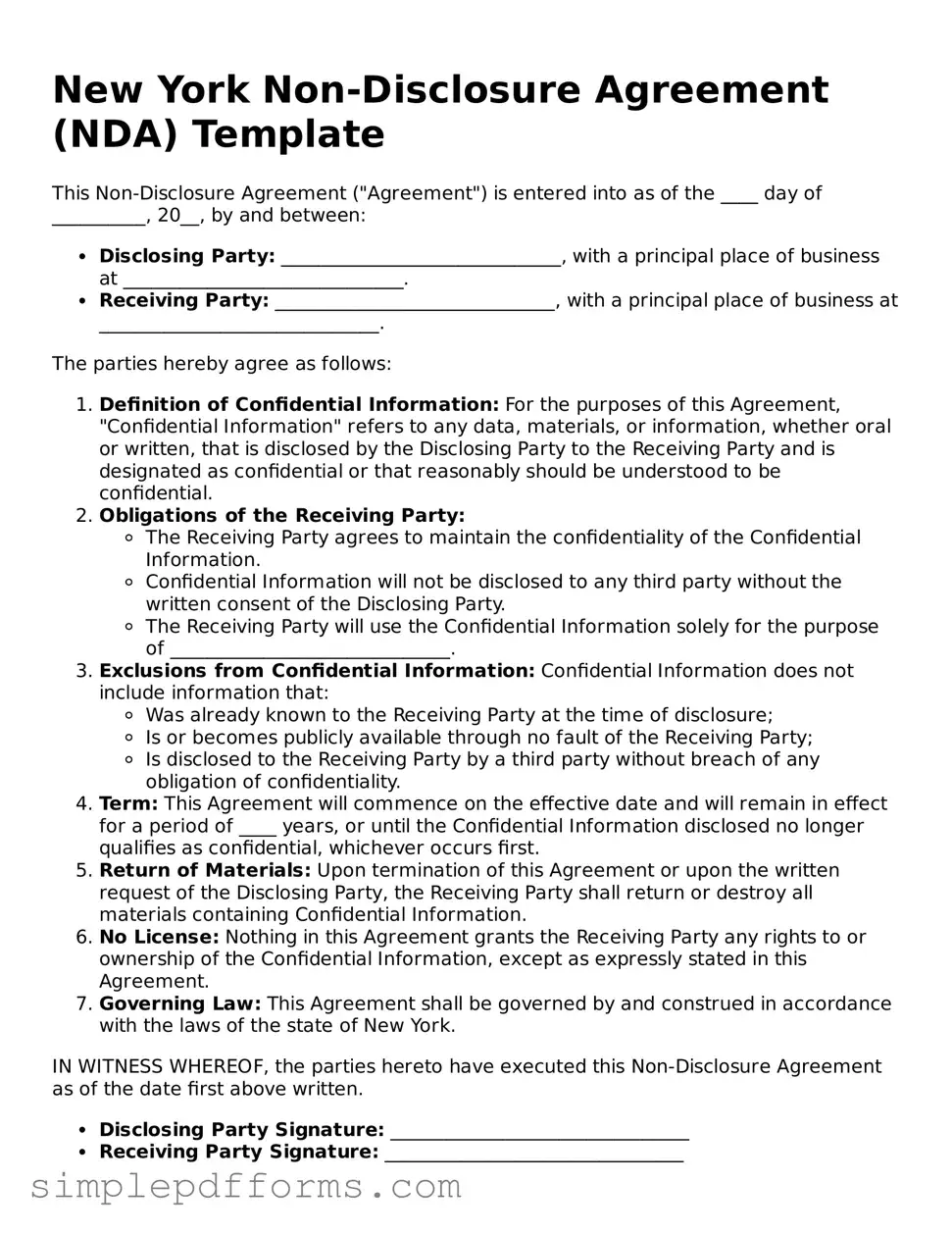When filling out the New York Non-disclosure Agreement (NDA) form, individuals often overlook critical details that can lead to misunderstandings or legal complications. One common mistake is failing to clearly define the confidential information. Without a precise description, parties may have different interpretations of what constitutes confidential material, which can lead to disputes.
Another frequent error is neglecting to specify the duration of the confidentiality obligation. It is essential to state how long the information should remain confidential. If this duration is not included, it may result in uncertainty about when the obligations end, potentially allowing sensitive information to be disclosed prematurely.
People also tend to forget to include the parties involved in the agreement. Listing all parties ensures that everyone understands their roles and responsibilities. Omitting a party can create loopholes, leading to confusion about who is bound by the NDA.
Inadequate signatures are another mistake that can invalidate the agreement. Both parties must sign the document for it to be legally binding. Failing to obtain a signature from one party may render the NDA unenforceable.
Some individuals assume that a verbal agreement suffices. However, NDAs must be in writing to be enforceable. Relying on verbal assurances can lead to misunderstandings and difficulties in proving the existence of the agreement.
Additionally, people often overlook the importance of including any exceptions to confidentiality. For instance, information that is publicly available or independently developed should not be subject to the NDA. Failing to clarify these exceptions can lead to unnecessary restrictions on the use of information.
Finally, individuals may not seek legal advice before finalizing the NDA. Each situation is unique, and having a legal professional review the agreement can help identify potential issues and ensure that the document meets all necessary requirements. Taking this step can prevent costly mistakes in the future.
